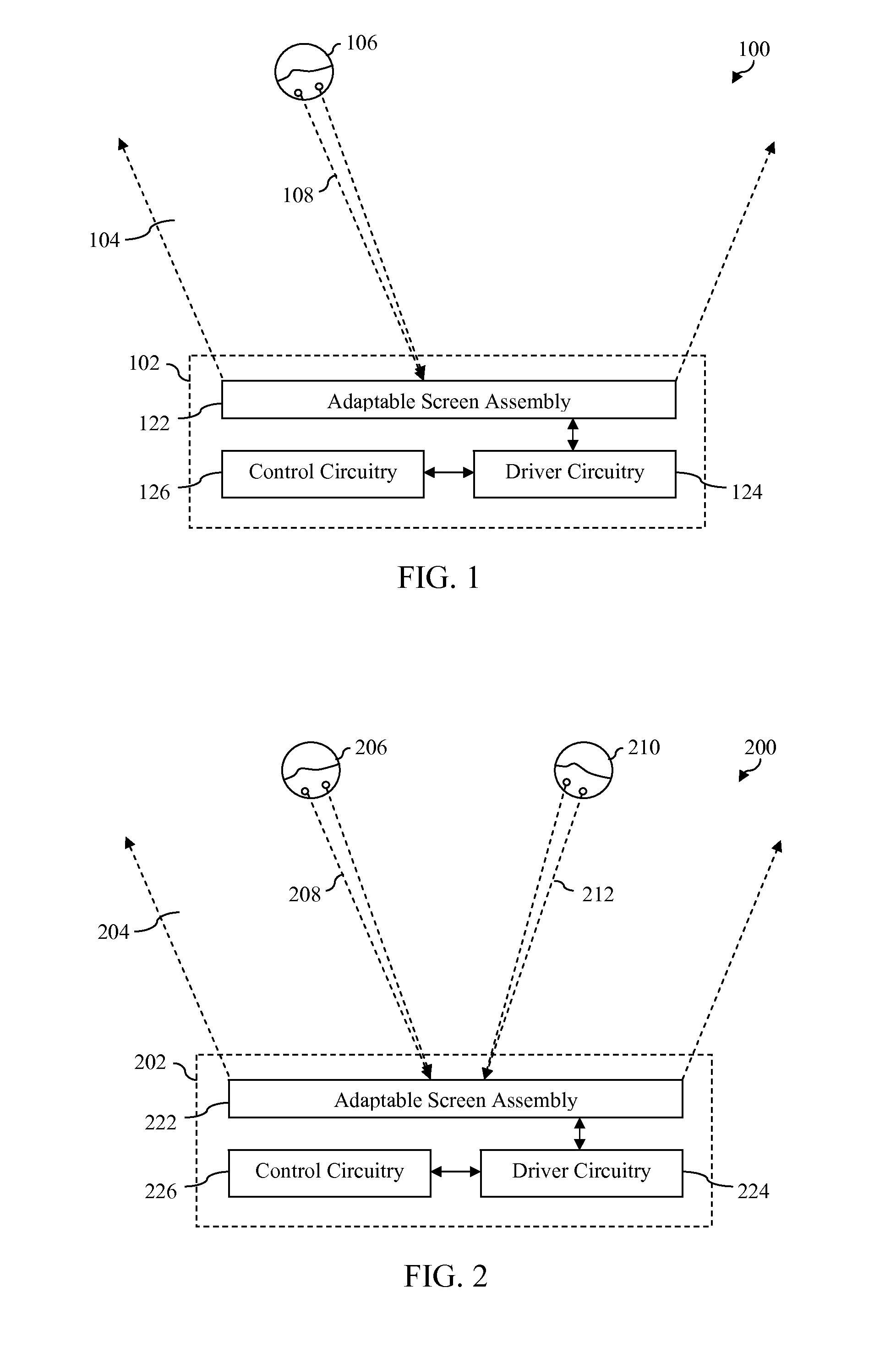Three-dimensional display system with adaptation based on viewing reference of viewer(s)
a display system and three-dimensional technology, applied in the field of display systems, can solve the problems of headache, nausea, eyestrain, etc., and the content, such as two-dimensional text, may be more difficult to read and interpret when displayed three-dimensionally
- Summary
- Abstract
- Description
- Claims
- Application Information
AI Technical Summary
Benefits of technology
Problems solved by technology
Method used
Image
Examples
first embodiment
[0084]For example, FIG. 4 is a block diagram of display system 302 in which reference information generation circuitry 310a and 310b jointly implement a triangulation technique to determine an estimated location of viewer 306 relative to adaptable screen assembly 322. As shown in FIG. 4, in accordance with this embodiment, reference information generation circuitry 310a includes a transmitter 406 that is operable to transmit a location tracking signal 408. Location tracking signal 408 may comprise, for example, a radio frequency (RF) signal or other wireless signal. In further accordance with the embodiment shown in FIG. 4, reference information generation circuitry 310b includes a plurality of receivers 4021-402N and triangulation circuitry 404 connected thereto. Receivers 4021-402N are operable to receive corresponding versions 4101-410N of location tracking signal 408. Triangulation circuitry 404 is operable to determine an estimated location of viewer 306 based on characteristic...
second embodiment
[0087]FIG. 5 is a block diagram of display system 302 in which reference information generation circuitry 310a and 310b jointly implement a triangulation technique to determine an estimated location of viewer 306 relative to adaptable screen assembly 322. As shown in FIG. 5, in accordance with this embodiment, reference information generation circuitry 310b includes a plurality of transmitters 5021-502N that are operable to transmit a corresponding location tracking signal 5121-512N. Location tracking signals 5121-512N may comprise, for example, RF signals or other wireless signals. In further accordance with the embodiment shown in FIG. 5, reference information generation circuitry 310a includes a plurality of receivers 5061-506N and triangulation circuitry 508 connected thereto. Receivers 5061-506N are operable to receive corresponding location tracking signals 5121-512N. Triangulation circuitry 508 is operable to determine an estimated location of viewer 306 based on characterist...
PUM
 Login to View More
Login to View More Abstract
Description
Claims
Application Information
 Login to View More
Login to View More - R&D
- Intellectual Property
- Life Sciences
- Materials
- Tech Scout
- Unparalleled Data Quality
- Higher Quality Content
- 60% Fewer Hallucinations
Browse by: Latest US Patents, China's latest patents, Technical Efficacy Thesaurus, Application Domain, Technology Topic, Popular Technical Reports.
© 2025 PatSnap. All rights reserved.Legal|Privacy policy|Modern Slavery Act Transparency Statement|Sitemap|About US| Contact US: help@patsnap.com



